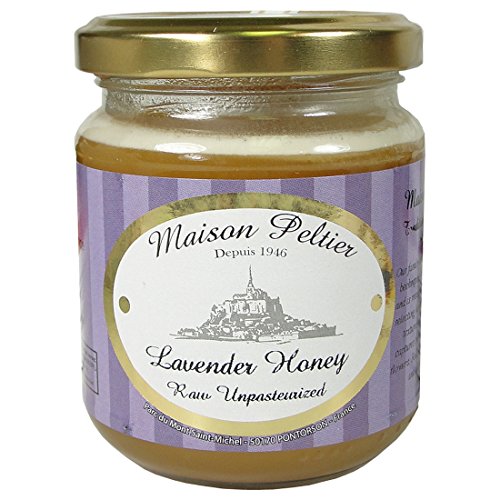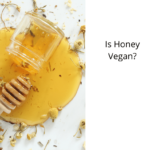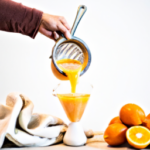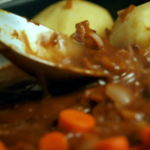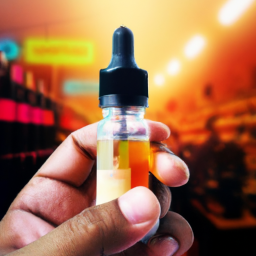Raw
How to Make Raw Honey Simple Syrup and Preserve the Nutrition
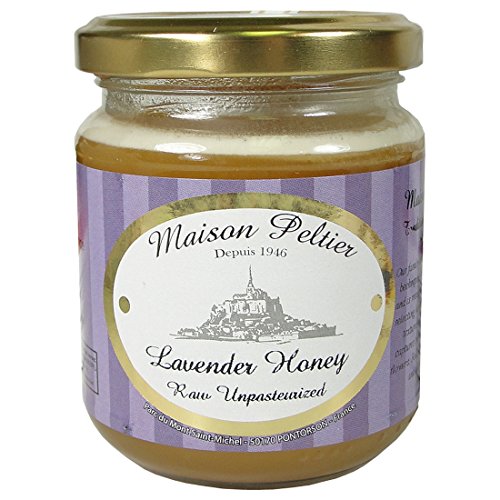
A versatile sweetening agent for many beverages and sweet dishes is raw honey simple syrup. Follow these instructions to create a raw honey simple syrup that maintains its nutritional benefits:
Ingredients:
- 1 cup of raw honey
- 1 cup of water
Instructions:
- In a saucepan, combine the raw honey and water.
- Heat the mixture over medium heat, stirring occasionally, until the honey has dissolved.
- Bring the mixture to a simmer and cook for 5 minutes, stirring occasionally.
- Remove the pan from the heat and let the syrup cool to room temperature.
- Once the syrup has cooled, transfer it to a clean glass jar with a tight-fitting lid. Store the syrup in the refrigerator.
To preserve the nutritional content of the raw honey, it is important to use low heat and avoid overcooking the honey. Overheating can destroy some of the beneficial enzymes and nutrients found in raw honey.
Additionally, it is important to store the raw honey simple syrup in a cool, dark place, such as the refrigerator. This can help prevent the breakdown of the honey and preserve its nutritional content.
When using the raw honey simple syrup, it is important to remember that it is still a high-calorie sweetener and should be used in moderation as part of a balanced diet.
If you’re using honey to sweeten cocktails, brush onto baked goods or glaze poached fruit, making simple syrup from raw honey is best.
Many recipes for simple syrup call for cooking honey, but this process destroys its beneficial enzymes and antiseptic properties. Making a simple syrup from raw honey is easy and allows you to keep all the nutrition!
1. Warm Water Method
Raw honey is an organic sweetener with numerous health advantages. It’s packed full of essential vitamins, minerals, and antioxidants; plus it has a subtle flavor and aroma that pairs nicely in cocktails.
Making simple syrup is an effortless way to add a subtle sweetness to any drink, from hot drinks like coffee and tea, to cold ones like iced lemonade or whiskey sours. All you have to do is mix equal parts sugar and water together over medium heat until completely dissolved.
Make flavorful simple syrups using herbs, spices or fruit. I enjoy infusing my syrups with different things to create something new every time.
For example, you could add some ginger to a Bee’s Knees cocktail, or lavender for mint julep. Or you could simply splash essential oils for extra flavor!

Another fun idea is infusing your syrup with different kinds of sugar. Light or dark brown sugar, demerara, molasses, maple syrup, coconut sugar, and even agave can all be used to create various simple syrups!
Some people enjoy experimenting with flavored honey simple syrups. For instance, clover honey provides a light and sweet taste while orange blossom honey adds citrus notes to cocktails.
If you want to infuse your syrup with herbs or spices, wait until the sugar has completely dissolved before adding them. After that, allow it to sit for 30-60 minutes so that all of the herbs, spices or fruits have had time to infuse.
You can also add a dash of instant coffee or espresso to any sweetener syrups, but do not go overboard as this will cause the simple syrup to become too thick.
Remember to store flavored simple syrups in the refrigerator to prevent mold and other undesirable growths. Runny honey only has about one month before it needs to be discarded, so if you want your syrup to last longer, make multiple batches.
2. Microwave Method
The Microwave Method
While some may be reluctant to cook their foods in the microwave, there are actually several advantages. It’s one of the fastest methods and it helps retain certain nutrients – particularly vitamin C – more quickly.
Furthermore, microwaving food helps preserve its flavor. For instance, many fruits retain their nutrient-rich qualities when cooked in a microwave. Furthermore, moistening vegetables and proteins helps prevent the loss of essential vitamins, minerals, and other essential nutrients during preparation.
Microwave energy is highly conductive, meaning it can quickly and efficiently heat up food’s water molecules. Furthermore, it stimulates plant cells to release their own water-soluble vitamins and other minerals.
However, using the microwave without taking proper precautions can be hazardous. For instance, when cooking protein dishes, make sure you turn and stir the food frequently as the microwave heats it up; this ensures that all insides of the food have been adequately heated and aren’t contaminated with bacteria or other hazardous elements.
Another advantage of the microwave is that it can quickly heat up food without damaging its texture or appearance. As such, it’s often employed when cooking delicate items like vegetables and some proteins.
Studies have demonstrated that microwave-cooked vegetables contain more vitamins and minerals than their conventional counterparts. For instance, researchers discovered that vitamin C – an essential nutrient for improving immunity and preventing disease – is better preserved when vegetables are microwaved.
Additionally, Harvard Health Letter reports that microwaving food keeps it fresher for longer than boiling it, since microwaves create steam from within out. They suggest that for optimal nutrition in vegetables, microwave them on their own rather than submerging them in boiling water.
To extend your syrup’s shelf life, prepare small batches and store in a tightly-sealed container in the refrigerator. Doing this will preserve the sweetness and flavor of honey while keeping it from spoiling. Generally, this should remain stable in your fridge for around one month.
3. Boiling Method
Honey simple syrup is the perfect way to utilize that jar of crystallized honey in your pantry. This transformation transforms it into a more pourable and silky-smooth honey syrup that can be used in drinks or on fresh fruit and yogurt bowls, ice cream cakes and more!
By using this method, honey will retain its nutrition and sweetness. Heat will dissolve any remaining crystallization present and rehydrate the honey for a delicious and healthy alternative to sugar syrup that can be enjoyed as often as desired.
To prepare this recipe, you will need: 1. Granulated sugar 2. Water 3. A jar with a lid 4. You can easily double or triple the recipe depending on how much syrup you want to make.
Simple syrup is typically composed with one part honey to one part water, but you can adjust the proportions depending on your preferences and desired flavor profile. For instance, milder varieties such as clover or buckwheat require a higher proportion of honey to water for better balance.
This recipe can be prepared with any type of honey, from mild clover or acacia to an intensely floral orange blossom. No matter which option you select, make sure to taste the finished product to ensure that it matches your desired cocktail.
For optimal flavor, choose a simple syrup that is neutral in taste; that way it won’t overpower other components of a drink or dessert. To enhance its unique taste, you can add herbs, spices or even some citrus juice for extra zest.
For an even more fragrant beverage, add lavender to your simple syrup. Let the dried lavender buds steep in the syrup overnight to fully extract their flavors. Strain out any soaked flowers before serving or store them in your fridge for up to one month.
If you want to keep your syrup safe, store it in a refrigerated and airtight glass jar. This will prevent any bacterial growth that might develop and guarantee its safety for consumption in the future.
4. Cold Water Method
Honey simple syrup is an ideal substitute for refined sugar in cocktails, mocktails, tea, coffee and baked goods. Not only is it naturally sweet and full of flavor but it also acts as a natural antiseptic with beneficial enzymes that protect the body against illness, disease and aging.
You can use it for a variety of drinks, such as lemonade and sparkling water. You could also make cold brew with it or add sugar to tea and coffee for extra sweetness.
To make the simplest syrup, simply mix together equal parts honey and water in a small jar and stir to dissolve. Store this syrup in an airtight mason jar in your fridge until use.
Be mindful that raw honey’s flavor and scent may differ season to season, so it is best to experiment with different jars before finding the ideal blend for you.
The cold water method is an efficient way to make simple syrup with raw honey that will remain shelf-stable for two weeks. Just be mindful not to heat the honey too much as this could break down its beneficial enzymes and alter its flavor.
Make a flavorful simple syrup with various herbs and spices by adding ground cinnamon, cloves, or ginger root. These spices pair perfectly with bourbon, brandy, or other alcohols for hot toddies on cold days. Add lavender to the syrup for an elegant twist that goes great with gin, vodka or tequila-based cocktails. You could also add this syrup to lemonade, limeade or sparkling water for an irresistibly refreshing beverage that is not overly sweet.
Aurelia is the Editor-in-Chief of The Graceful Kitchen, a vegan lifestyle blog that focuses on delicious, nutritious, and ethical eating. A lifelong vegan, Aurelia is passionate about sharing her love of plant-based cuisine with others. She is a regular contributor to several online and print publications, and has been interviewed by major news outlets about the benefits of a vegan diet. In her free time, Aurelia enjoys cooking, hiking, and spending time with her cats.
Raw
How to Find Nutrition Value of Raw Meat I Purchase in Market
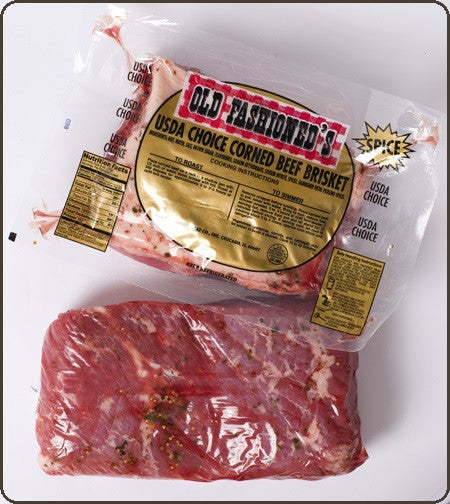
1. Look at the label
Labels on meats and poultry typically display the nutritional information based on the raw weight, unless specified otherwise. When meat is cooked, it usually loses about 25% of its weight, meaning a 4 oz label corresponds to roughly 3 oz after cooking. To accurately calculate the protein, fat, and calorie content per serving, divide this adjusted cooked weight by the number of portions you plan to eat. This simple approach encourages healthier eating habits!
2. Check the website
Nutritionally speaking, raw meat does not come with a set nutritional value. To determine its true nutritional worth, read the ingredients and nutrition labels carefully – something you should do for any food item, but especially meat. As there is often misinformation out there, do your due diligence before purchasing anything; for instance, check the website of the vendor to ensure they use traceable and ethically sourced ingredients or ask directly if they have any nutritional facts available.
3. Ask the seller
When shopping for a nutritious serving of meat, there are a few things to consider. First and foremost, select your cut carefully from sustainable sources like pastured or grass fed animals. If unsure where to begin with your shopping list, ask your favorite butcher for their recommendations based on individual dietary needs and lifestyle. Additionally, pay close attention to the quality of the meat such as its moisture content, texture and smell before purchasing.
4. Check the packaging
When purchasing raw meat, inspecting its packaging for firmness and no tears or holes is essential. It should feel cold to touch and have no odor. A red liquid at the bottom may seem unappetizing but this is actually myoglobin – a protein responsible for giving meat its color. This also keeps food fresh by creating an environment free from bacteria-filled environments.

You may notice absorbent pads underneath many packaged meat products; these protect meat from getting contaminated by liquids trapped inside their packaging; therefore, checking with recycling facilities before discarding these pads is recommended.
Aurelia is the Editor-in-Chief of The Graceful Kitchen, a vegan lifestyle blog that focuses on delicious, nutritious, and ethical eating. A lifelong vegan, Aurelia is passionate about sharing her love of plant-based cuisine with others. She is a regular contributor to several online and print publications, and has been interviewed by major news outlets about the benefits of a vegan diet. In her free time, Aurelia enjoys cooking, hiking, and spending time with her cats.
Raw
How to Make a Raw Nutrition Bar at Home
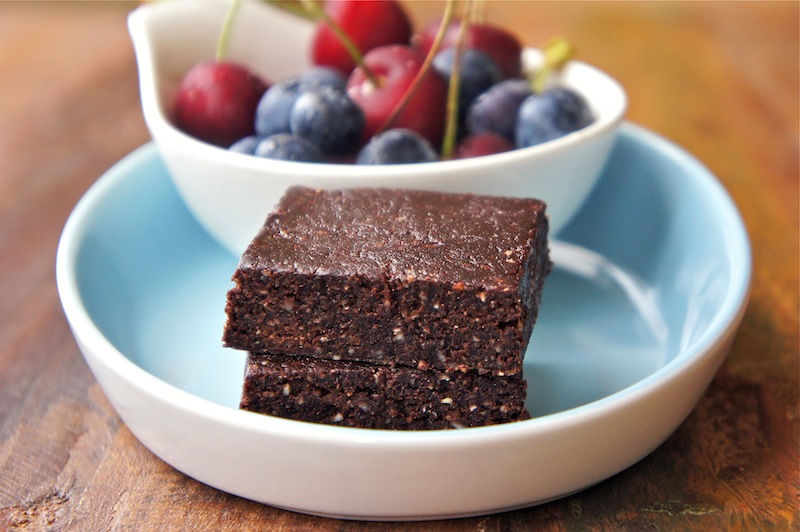
Raw energy bars are a great choice for a healthy and delicious snack on the go. Here is a simple recipe for making your own at home:
Ingredients:
- 1 cup almonds
- 1 cup dates, pitted
- 1/2 cup unsweetened shredded coconut
- 1/4 cup chia seeds
- 2 tablespoons raw honey
- 1 tablespoon coconut oil
- 1 teaspoon vanilla extract
- Pinch of sea salt
Instructions:
- Place the almonds in a food processor and pulse until they are roughly chopped.
- Add the pitted dates, shredded coconut, chia seeds, honey, coconut oil, vanilla extract, and sea salt to the food processor.
- Pulse the mixture until it starts to come together and form a sticky dough.
- Line an 8×8 inch baking dish with parchment paper.
- Transfer the mixture to the baking dish and press it down firmly with your hands.
- Chill the mixture in the refrigerator for at least 30 minutes to set.
- Once the mixture has set, remove it from the baking dish and cut it into bars.
- Store the raw nutrition bars in an airtight container in the refrigerator for up to 2 weeks.
You can also customize this recipe by adding in other ingredients such as dried fruits, nuts, or protein powder to create a variety of different flavors. These bars are perfect for a quick breakfast, snack or post-workout fuel. Enjoy!
If you’re an athlete or simply want to maximize the nutritional value of your food, a raw nutrition bar is an ideal option. These bars are nutrient-rich and packed with fibre, protein, and healthy fats for increased energy levels and sustained energy throughout the day.
These no-bake energy bars are simple to make and customizable to your personal taste. Simply add fruit, oats, nuts/seeds or other mix-ins for the perfect bar!
Ingredients
Raw nutrition bars are an ideal way to get your daily nutrients without adding extra calories. They’re especially ideal for athletes who require a quick snack between meals.
The great news is that you can easily make these delicious treats yourself at home. All you need are some basic ingredients and some time to mix them up.
One of the key ingredients you will need for a homemade raw nutrition bar is dates. Dates provide healthy sugar and antioxidants while being an excellent source of fiber that may help lower cholesterol levels.

Coconut oil is another important ingredient, providing healthy fats. Not only that, but it may help prevent heart disease and stroke as well.
Other ingredients you can include in your raw nutrition bars are oats, peanut butter, cocoa powder, protein powder and natural honey or maple syrup. Doing so will guarantee you get all the important vitamins, minerals and fibers from your food intake.
Add your favourite adaptogenic powders, like ashwagandha or ginseng, to boost the nutritional value of these bars. Furthermore, adding ground flax seed will increase their fiber content significantly.
Once all ingredients are prepped, simply blend them together until you achieve a dough-like texture. Press this mixture into a pan and chill until firm.
These bars are simple to make and a nutritious addition to any healthy diet. They can be eaten as breakfast, midmorning snack or meal replacement – perfect for athletes who need something quick between workouts.
Warrior RAW Protein Bar is an irresistibly tasty and nutritious protein bar that provides all essential amino acids. It’s suitable for vegans and gluten intolerant individuals alike, providing a convenient source of energy that can be taken as pre-workout, emergency energy booster, or travel food.
Preparation
Making a bar that lives up to its promise as an indulgent snack requires selecting the correct ingredients. Key components that go into bar formulation include protein source, sweetener, fiber source, fats/oils/emulsifiers/vitamins/minerals/nutraceuticals and flavors.
Finding the ideal ingredient for a bar is no small feat. You may have to experiment with different amounts and types of components until you find your ideal balance. The ideal nutritional bars will have an optimal combination of quality proteins, healthy fats, nutritious carbohydrates and minimal amounts of sugar.
One popular type of nutrition bar is the whole food bar. These typically feature various fruits, nuts, seeds and other plant-based ingredients compressed into a bar form. One major advantage of these bars is that they tend to be lower in calories and fat than their processed counterparts – particularly helpful for those trying to shed some pounds!
If you’re looking to make your own raw energy bar at home, there are plenty of recipes online. The key is to first decide what flavor profile and then search the internet for inspiration.
There are plenty of options when it comes to creating your own bar with just a few key components. Some suggestions include pulse the ingredients in either a blender or food processor before mixing them together for an even smoother mix.
Before scooping or shaping the mixture into bars or small balls, let it rest for a few minutes. This allows the ingredients to air dry slightly and makes them easier to stick together. Once dry, you’re ready!
Mixing
Raw nutrition bars should contain key components like protein, healthy fats and low-glycemic carbohydrates. They’re also packed with essential vitamins, minerals, enzymes and phytonutrients – perfect for anyone on a Paleo, Primal, GAPS or SCD diet as well as those on low carb, raw or vegan diets; athletes; people with health challenges – you name it!
These bars are an affordable way to create homemade raw nutrition bars without breaking the bank. You can customize them with flavors you love and use a range of sweeteners such as fruits, honey and maple syrup. For even greater nutritional benefits, use multiple protein powders or combine them all for extra nutritional punch!
The initial step in making raw energy bars is to pulse together all dry ingredients. Then, add wet ingredients and pulse until a dough forms. Slowly add more water until your mixture forms an even ball that can easily be formed into bars. If your dough seems too crumbly for rolling into bars, add a small amount of coconut oil for more firmness or add ground flax seed or your favorite adaptogenic potion for additional nutritional benefit.
Storage
If you’re searching for a low-calorie, nutritious snack to munch on, raw nutrition bars are your perfect choice. You can even make extra to store in the freezer for later use – just remember to refrigerate them promptly after opening to prevent flavors from fading and keep them from becoming dry and stale. To ensure these bars stay in top condition over time, use quality food storage containers with lids to avoid mold growth. Best of all? They’re easy to transport in lunch bags or purses without sacrificing flavor or texture!
Hi, I’m Alexander. I’m a vegan of over 20 years, and I initially made the switch for health reasons. However, as time went on, I became more and more passionate about the ethical and environmental implications of leading a vegan lifestyle.
I am the author of The Graceful Kitchen, a vegan blog where I share recipes for delicious and nutritious vegan meals. As someone who is deeply committed to living a cruelty-free life, I am also a strong advocate for using whole foods as the foundation of a healthy diet – and believe that going vegan is one of the best ways to achieve this.
Raw
How is Biotin Bioavailability Affected by Raw Egg Consumption?
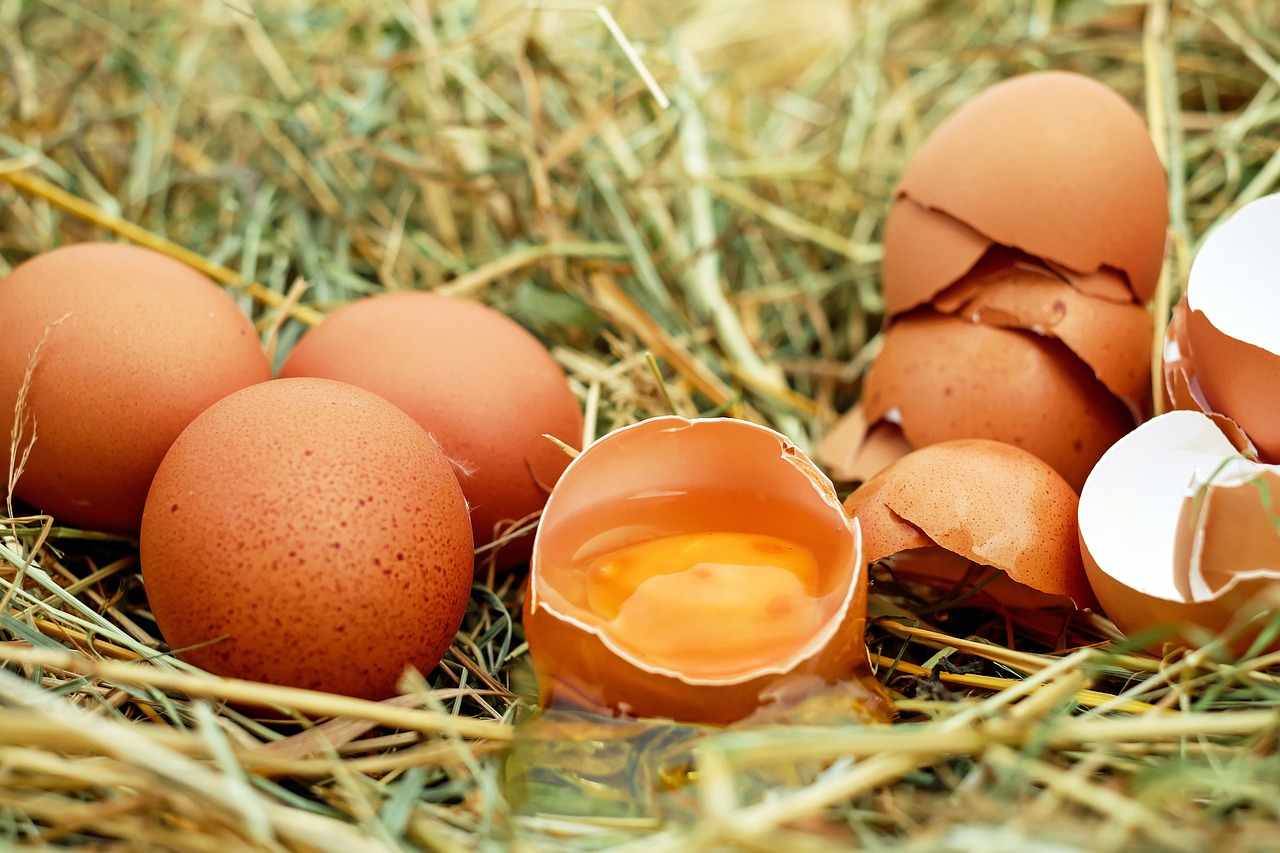
Biotin, a water-soluble B vitamin, is essential for synthesizing glucose and fatty acids. It is especially important for women during pregnancy.
Some people worry that eating raw eggs in large amounts daily could lead to biotin deficiency. However, this is unlikely the case since raw eggs do not contain the protein avidin which could prevent absorption of biotin.
Biotin is a water-soluble vitamin that plays an important role in energy metabolism and maintaining healthy hair, skin, and nails. Raw egg consumption has been found to interfere with biotin bioavailability due to the presence of avidin, a protein found in raw egg whites.
Avidin has a high affinity for biotin, which means that it can bind to biotin and prevent its absorption in the small intestine. When raw eggs are consumed, the avidin in the egg white can bind to biotin in the diet and prevent its absorption. This can lead to a deficiency of biotin over time.
However, cooking the egg denatures the avidin protein, rendering it unable to bind to biotin. This means that the bioavailability of biotin is not affected when eggs are cooked, and the body is able to absorb and utilize biotin from cooked eggs. Therefore, it is generally recommended to consume eggs that are fully cooked to ensure adequate biotin intake and prevent the risk of biotin deficiency.
It is important to note that biotin deficiency is rare in healthy individuals who consume a balanced diet. However, individuals who consume large amounts of raw egg whites or those who have a genetic disorder that affects biotin metabolism may be at risk for biotin deficiency. If you have concerns about your biotin intake, it is recommended to speak with a healthcare provider or a registered dietitian.
Biotin Is a Water-Soluble Vitamin
Biotin is a water-soluble vitamin essential for the body’s metabolism. It aids the body in using carbohydrates, fatty acids and amino acids as energy sources; additionally, it aids cells in synthesizing proteins.
Brewer’s yeast, cooked eggs, sardines, nuts (almonds, peanuts, pecans), and nut butters are all sources of naturally occurring selenium. You may also purchase it as a dietary supplement.
Biotin, which the body cannot synthesize on its own, must be obtained through food sources. It is essential in supporting proper immune function and brain development – particularly important for pregnant women and breastfeeding mothers.
Most people consume enough biotin, but some may be at risk for deficiency. These include those diagnosed with genetic disorders that prevent the body from producing the enzyme responsible for breaking down biotin, those who drink excessively or take certain medications which inhibit its absorption.
Raw egg consumption may lead to biotin deficiency due to a protein called avidin, which blocks its absorption by the body. However, once cooked, avidin is denatured and biotin can be readily absorbed by the body.
Biotin is typically ingested as food proteins that are broken down by digestive proteases and released to the small intestine where it absorbs into enterocytes. A high-affinity sodium/multivitamin cotransporter in these enterocytes transports biotin from the food protein into cell membrane, where it then travels into circulation before excreted unchanged through urine.
Studies have suggested that taking large doses of biotin may aid those living with diabetes in controlling their blood glucose levels. This is likely because biotin helps produce insulin, which regulates glucose concentrations.
Biotin may benefit hair, skin and nail health in several ways. Studies have demonstrated that it can increase the strength and growth of nails for women with brittle nails; further research indicates it could even aid those suffering from taste loss.
Biotin Deficiency Is Rare
Biotin, also known as vitamin B7, is a water-soluble B vitamin essential for producing glucose and fatty acids in your body. You can find it in foods like eggs, meat, fish, and vegetables.
Biotin deficiency is rare, but some individuals with certain genetic conditions that prevent the body from properly using it can become low in this vitamin. These include holocarboxylase synthetase deficiency (also called multiple carboxylase deficiency), biotinidase deficiency, and the inability to transport biotin into cells.
Patients with these disorders should receive lifelong biotin supplementation to maintain healthy levels of this essential vitamin. Untreated, the condition can lead to serious symptoms such as hearing loss, blurred vision, and learning difficulties if not caught and treated early.
Even if you do have one of these conditions, eating raw eggs should not cause a biotin deficiency. This is because avidin, the protein in egg whites, binds to biotin so that it cannot be absorbed in the small intestine.
Due to the destruction of this protein by heat, eating large quantities of raw eggs without becoming deficient in this essential nutrient is possible. To increase your intake of this B vitamin, however, it’s best to either avoid raw eggs or consume them in small and frequent doses.
It is also worth noting that certain medications can lower your biotin level, so be sure to monitor your health and consult your doctor for a treatment that works for you. Anticonvulsant therapy, for instance, may reduce biotin levels if taken for an extended period of time.
However, including biotin in your diet is generally beneficial if you are pregnant or trying to become pregnant. This is because pregnant women require more biotin for proper growth and development of their unborn child.
Biotin deficiency is a serious condition that can cause permanent damage such as hearing loss, vision problems and learning disabilities. If your family history of this condition runs in your family, ask your doctor about screening to protect you.
Biotin Deficiency Is More Common in Women
Biotin is a water-soluble vitamin that plays an essential role in helping your body convert carbohydrates and fat into glucose. Additionally, it aids the metabolism of amino acids and proteins to build new cells and tissues.
Vitamin B1 deficiency can lead to various symptoms, such as thinning hair, red scaly rash around the mouth and eyes (known as “biotin deficiency rash”), brittle nails, and seizures.
Biotin deficiency usually begins during the first weeks and months of life and can have serious consequences if left untreated. These individuals are at an increased risk for developing life-altering conditions like seizure disorder, lung disease, brain damage, and cancer.
Biotin deficiency can be caused by either an inherited disorder called biotinidase deficiency or certain medications that reduce its levels in your body. In some cases, low levels of biotin may also be due to another health issue or condition like thyroid disorder, vitamin B12 deficiency, or iron deficiency.
Biotinidase deficiency occurs when a gene mutation prevents the activity of an enzyme responsible for biotin absorption, called holocarboxylase synthetase.
Holocarboxylase synthase, an essential enzyme for biotin absorption from food sources, must be present to function. Without it, your body cannot use biotin properly and you may experience constipation.
It is easy to get enough biotin by eating foods that naturally contain it or taking a vitamin supplement with biotin. There are various kinds of vitamins available, including those that only contain biotin as well as those that include other essential vitamins.
Some studies have demonstrated the beneficial effects of certain supplements on nail, hair and skin health. However, further investigation is necessary to definitively prove whether they truly work.
Women are more vulnerable to developing biotin deficiency than men due to their increased need for this vitamin during pregnancy. Biotin helps produce carboxylases and histones, both essential building blocks of embryonic development.
Biotin Deficiency Is More Common in Smokers
Biotin is one of the B complex vitamins, meaning it converts fats and carbohydrates into energy to power your body’s functions. Additionally, it keeps blood glucose and cholesterol levels normal as well. Finally, Biotin plays an essential role in skin health as well as producing keratin – the protein responsible for giving nails and hair their strength – which gives your nails and hair their strength.
Biotin deficiency is a rare but serious condition that can occur if your body doesn’t get enough of this vitamin or fails to absorb and use it correctly. Common symptoms include brittle, thinning hair and split nails; weakness or loss of muscle/joint function; fatigue; numbness/tingling in hands/feet; dry skin with itchy flaky patches, slow heart rate fluctuations and low body temperature.
People who don’t get enough dietary biotin or can’t absorb it properly due to conditions in their gut are at risk for deficiency. These include heavy alcohol consumption, inflammatory bowel disease and chronic diarrhea, pregnancy, kidney dialysis and taking certain prescription drugs that interfere with biotin metabolism.
Researchers observed that smokers excreted 30% less biotin than nonsmoking controls (P 0.02). The ratio of urinary bisnorbiotin and biotin sulfoxide to biotin increased in smokers, suggesting an accelerated metabolism of this nutrient. Furthermore, smokers excreted 3-hydroxyisovaleric acid, a biotin metabolite indicating marginal tissue deficiency.
Smoking increases the rate of catabolism for several nutrients, such as lipids, antioxidants and B vitamins. Particularly, biotin metabolism is affected since even marginal deficiency can be teratogenic in mammals. Studies conducted on fetuses born to mothers who smoked during pregnancy have demonstrated an increased likelihood of abnormal brain, spinal cord or limb development in these babies.
Ilana has been a vegan for over 10 years. She originally made the switch for health reasons, but soon found herself becoming more and more passionate about the ethical and environmental implications of a vegan lifestyle. Ilana is the author of The Graceful Kitchen, a blog all about veganism. She loves to cook up delicious and nutritious vegan meals, and share her recipes with others who are interested in leading a cruelty-free life. Ilana is also a strong advocate for using whole foods as the foundation of a healthy diet, and believes that going vegan is one of the best ways to achieve this.
-
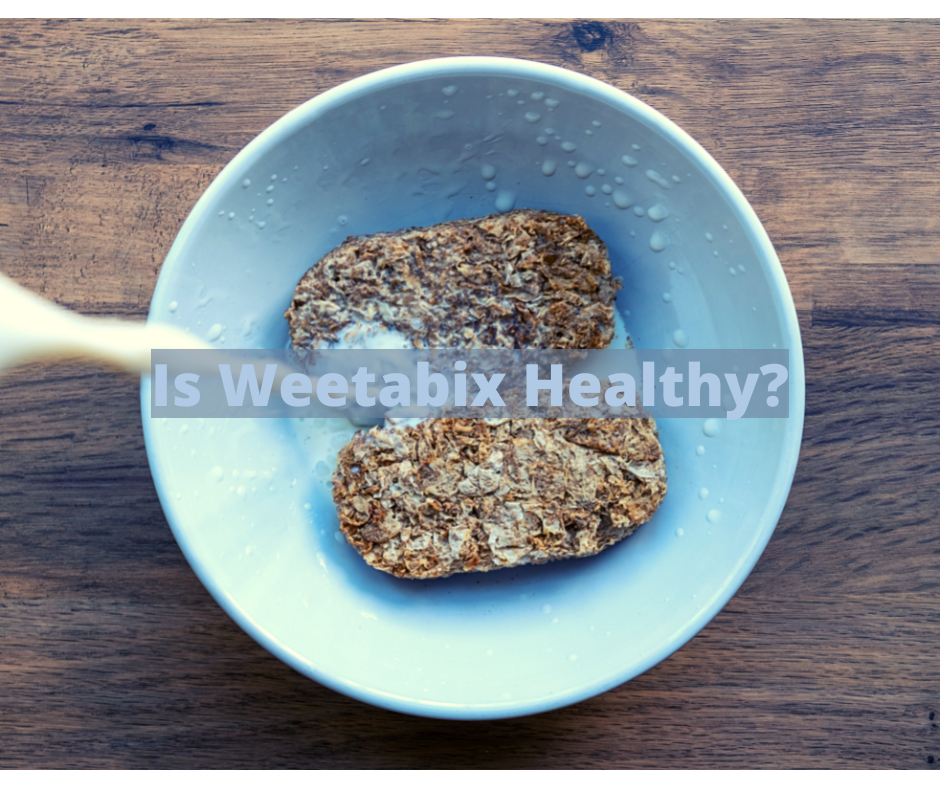
 Vegan3 months ago
Vegan3 months agoIs Weetabix Healthy? 14 Things You Should Know
-
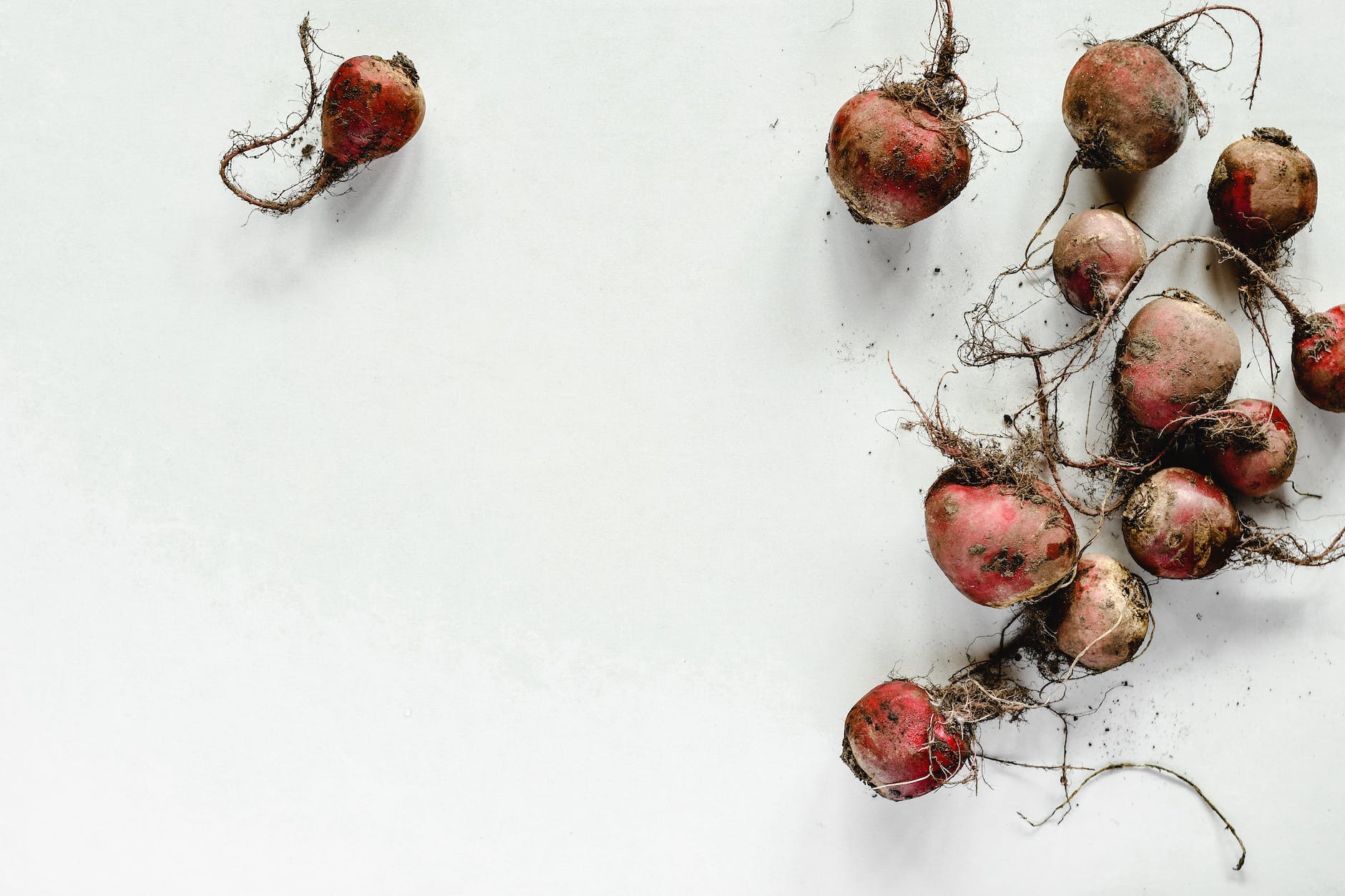
 Raw1 month ago
Raw1 month agoWhy Do Raw Beets Irritate My Throat?
-
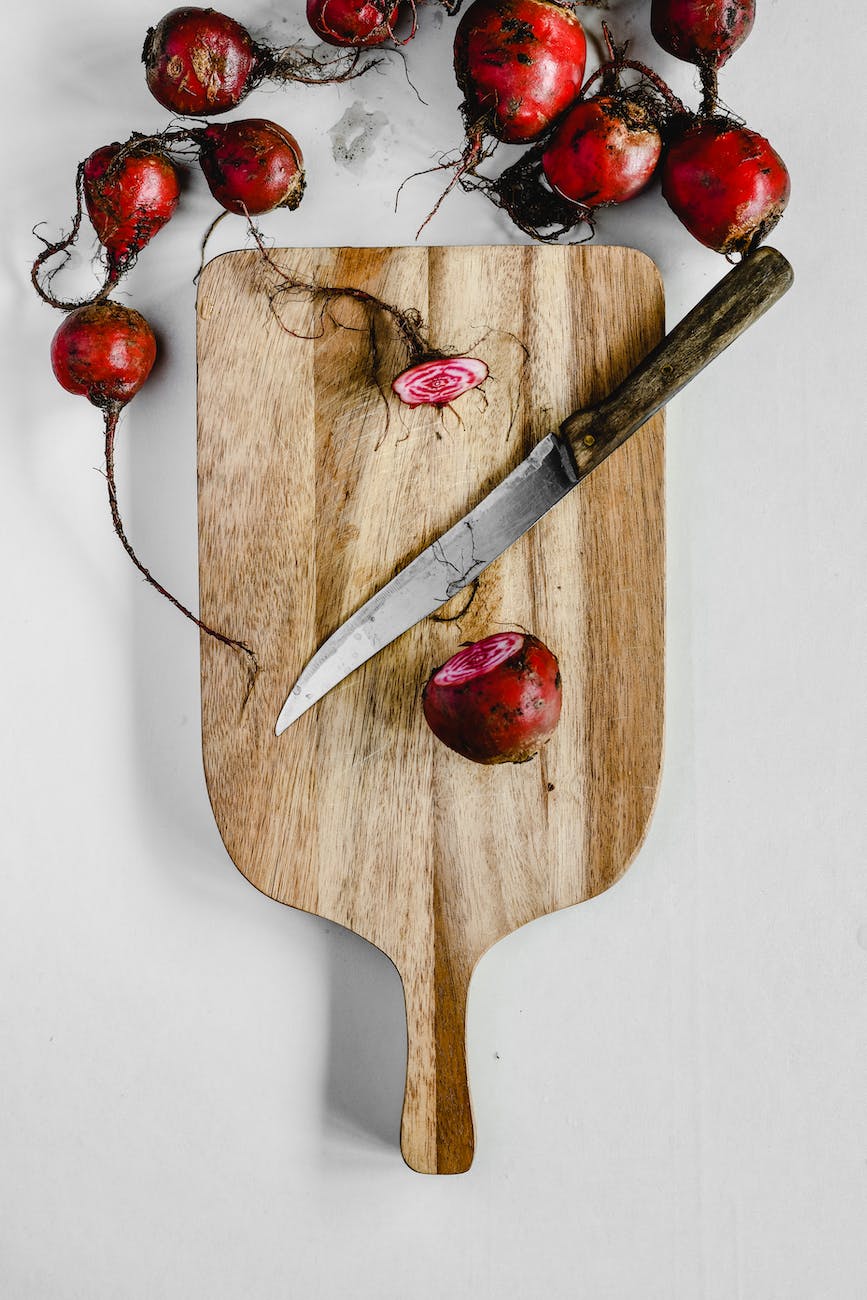
 Beginners Guides1 month ago
Beginners Guides1 month agoIf Beets Are Soft Are They Bad?
-

 Vegan3 months ago
Vegan3 months agoIs Gatorade Zero Healthy? 33 Things You Should Know
-
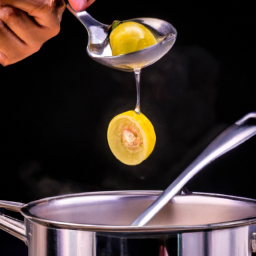
 Juice22 hours ago
Juice22 hours agoHow To Fix Too Much Lemon Juice In Soup
-
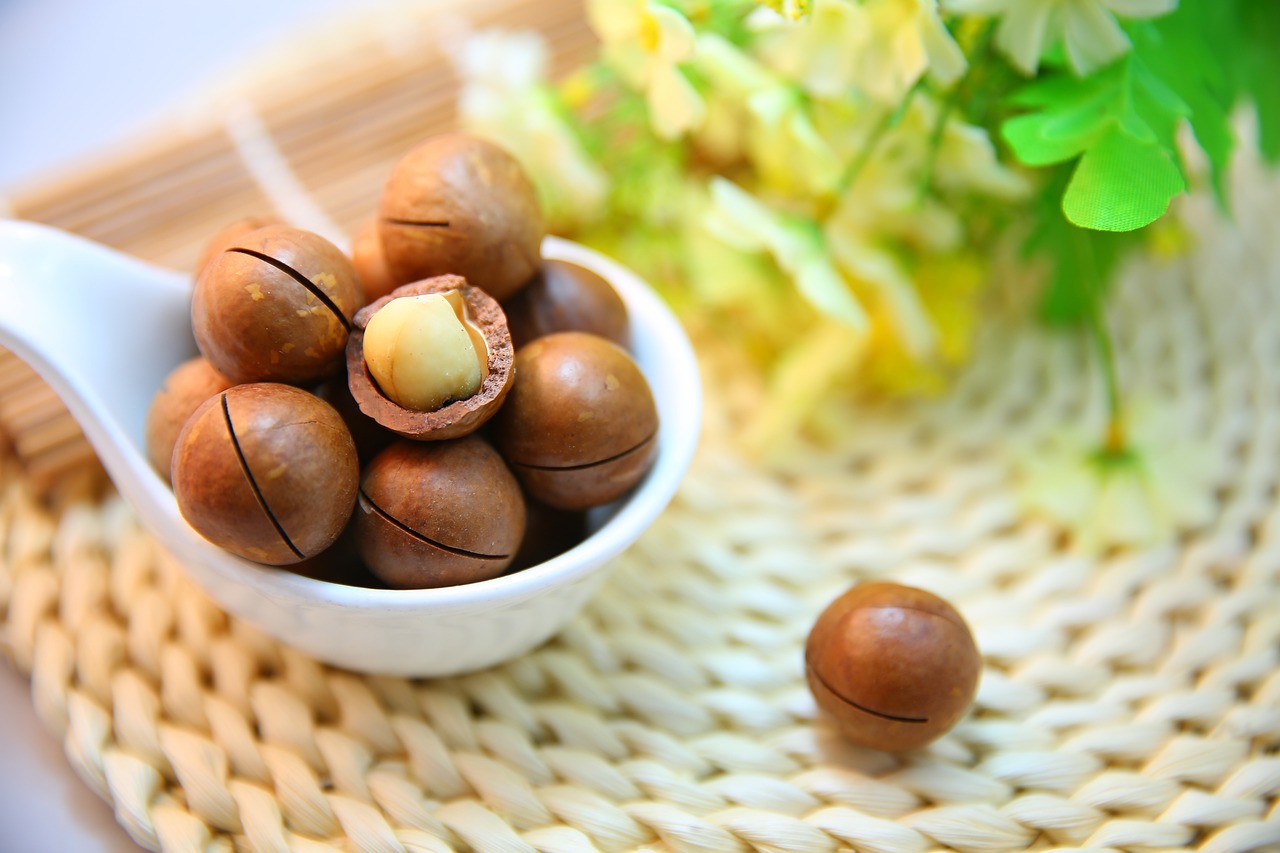
 Raw4 weeks ago
Raw4 weeks agoMacadamia Nuts – Which is Better Nutrition Raw Or Dry Roasted?
-

 Juice3 months ago
Juice3 months agoHow To Make Dmt Vape Juice
-

 Vegan3 months ago
Vegan3 months agoHow to Tell If Your Eggplant is Going Bad by Looking at the Color on the Inside



